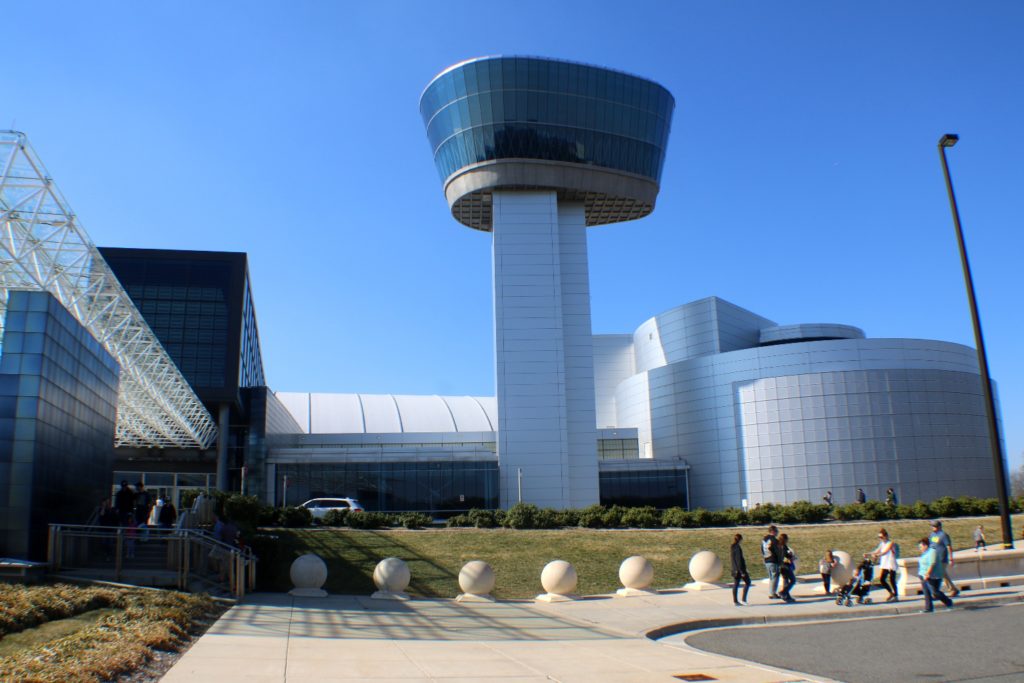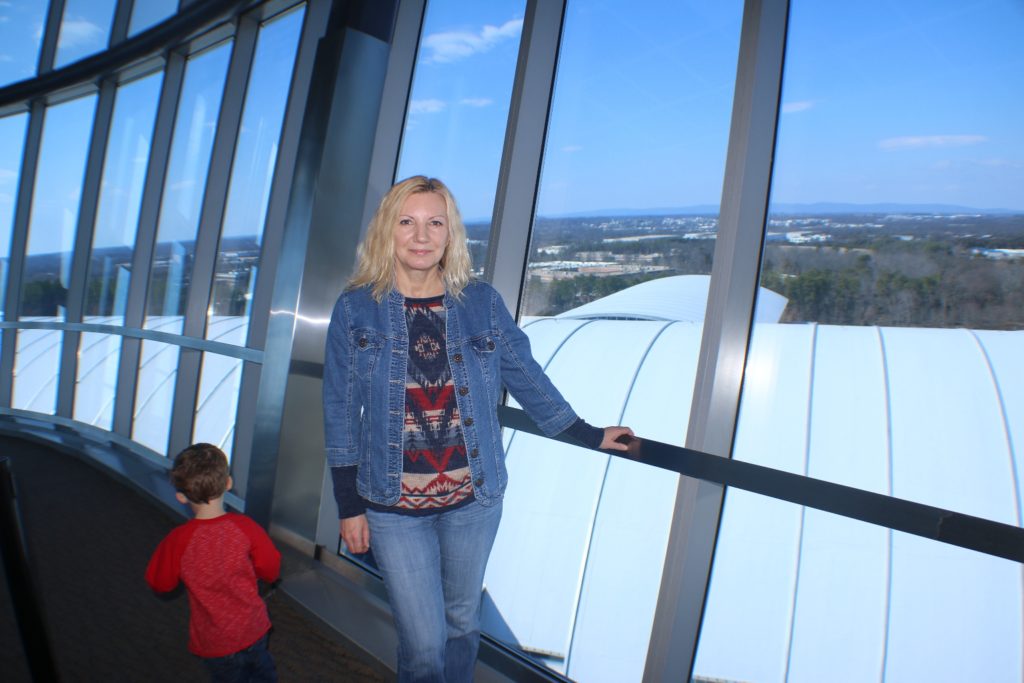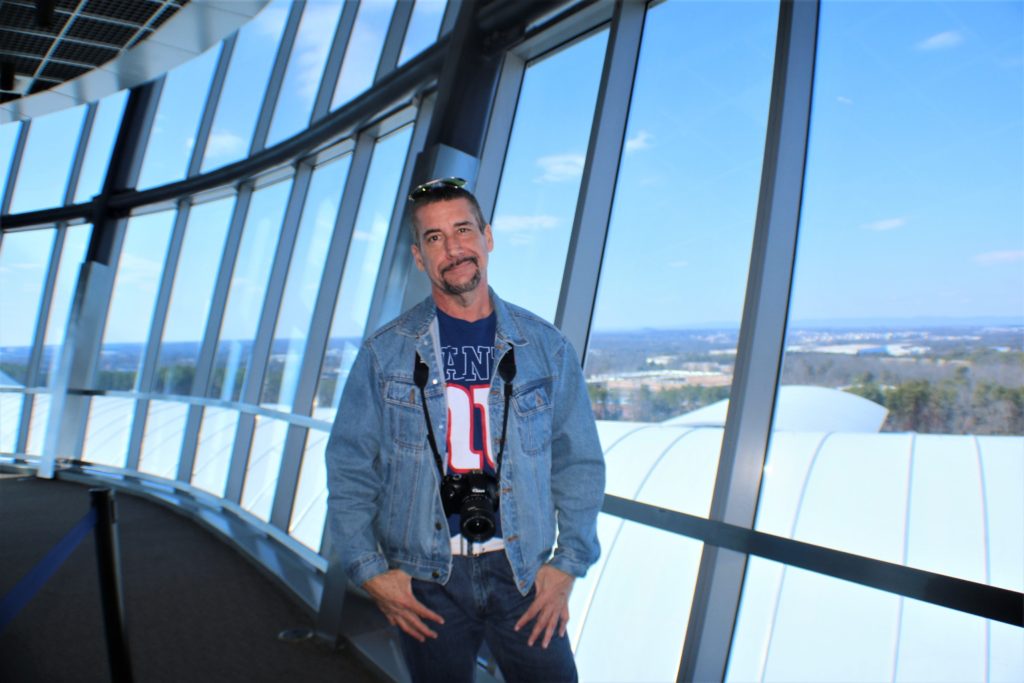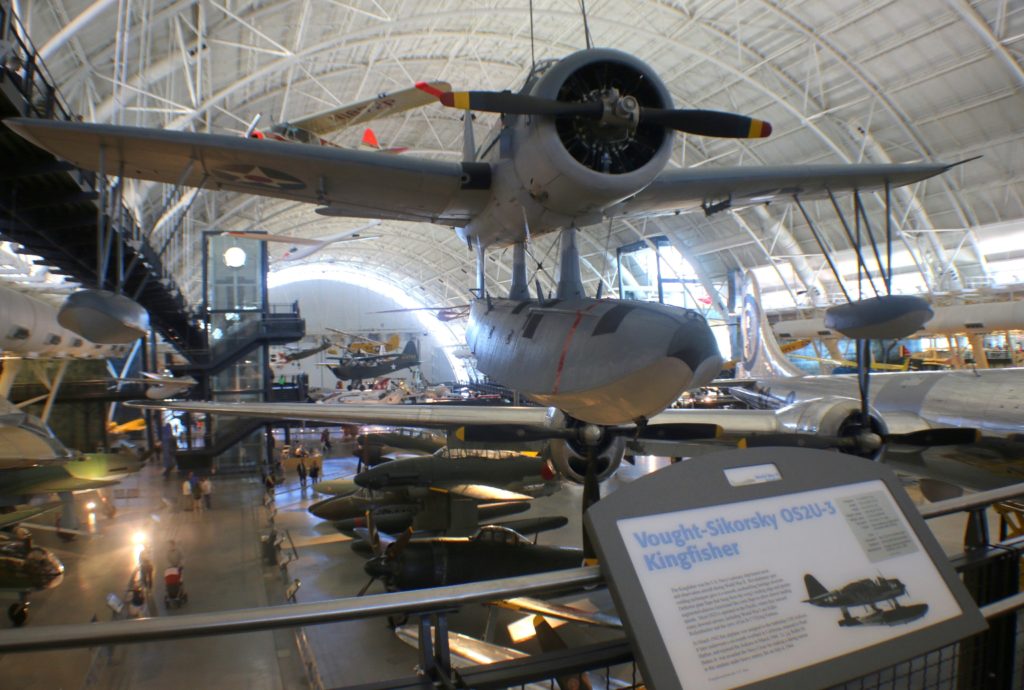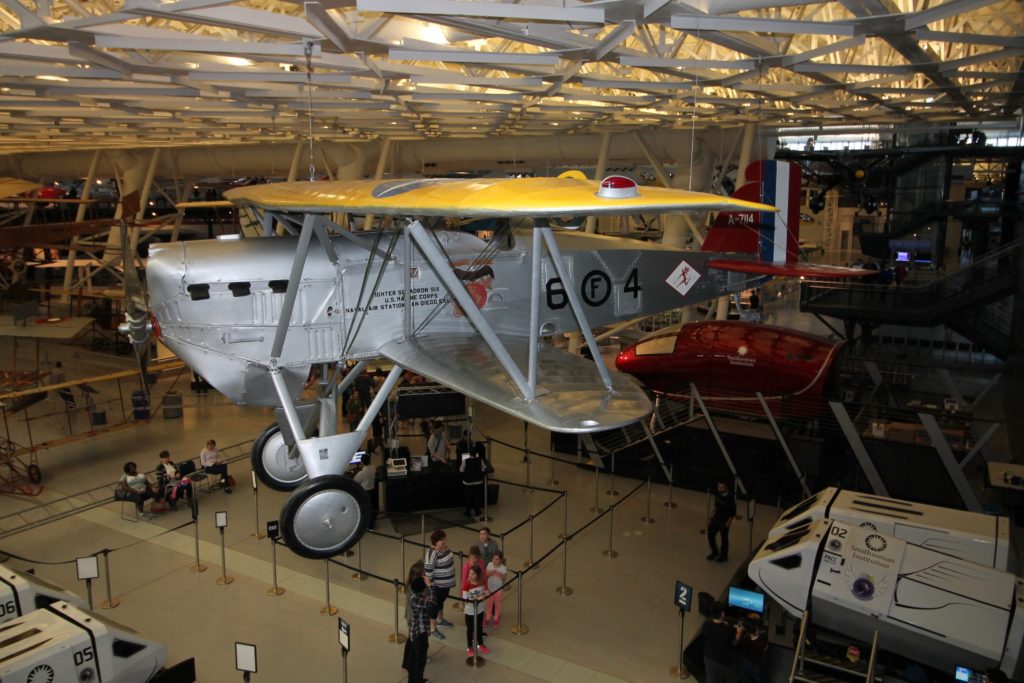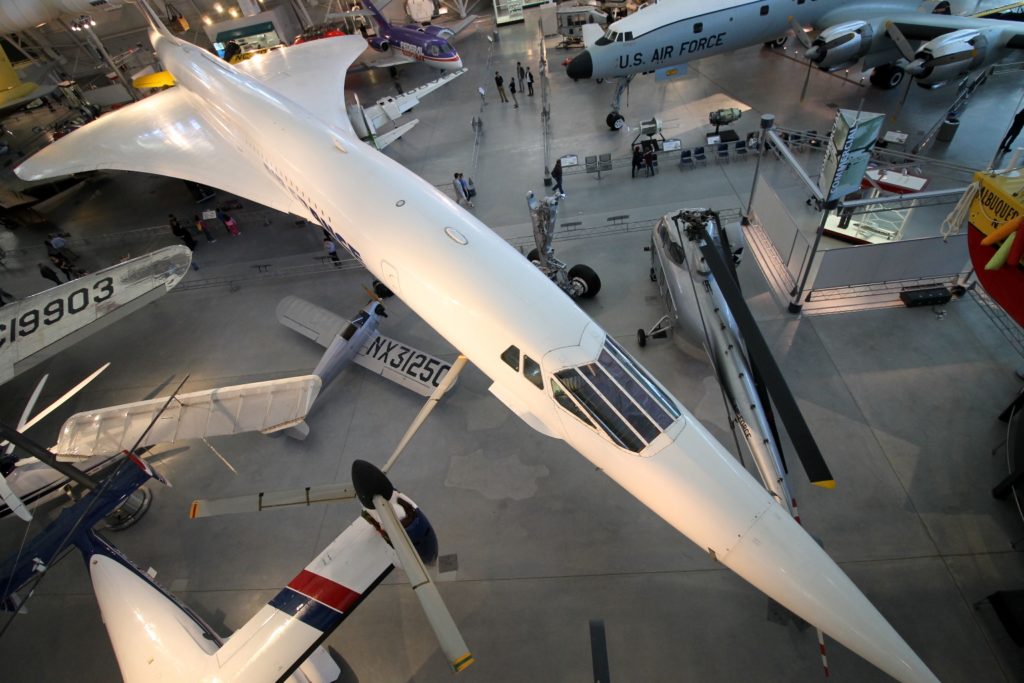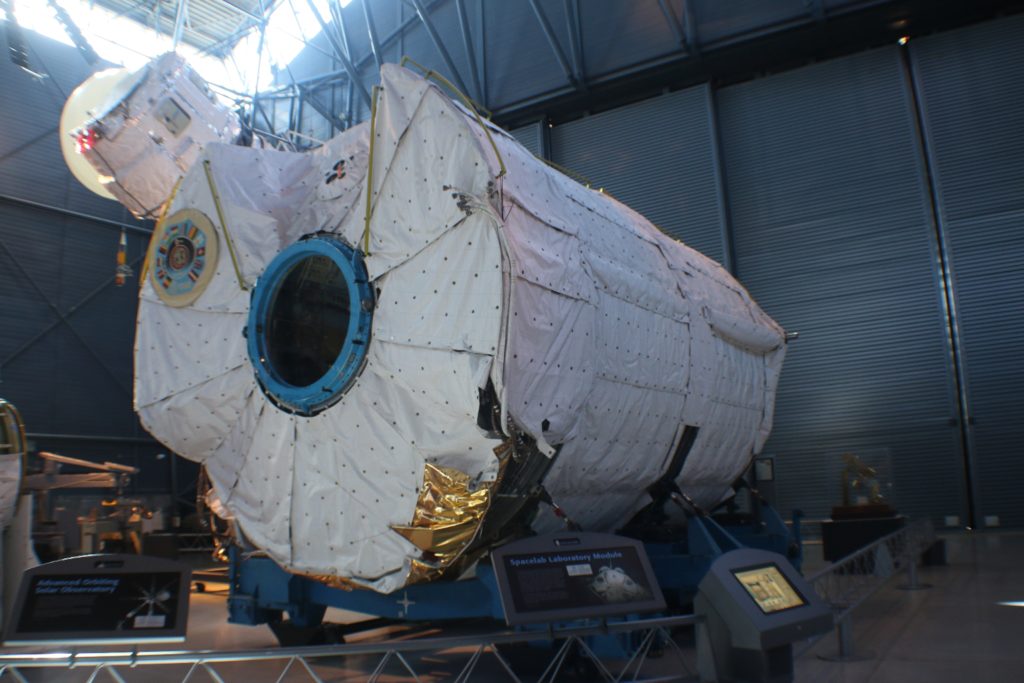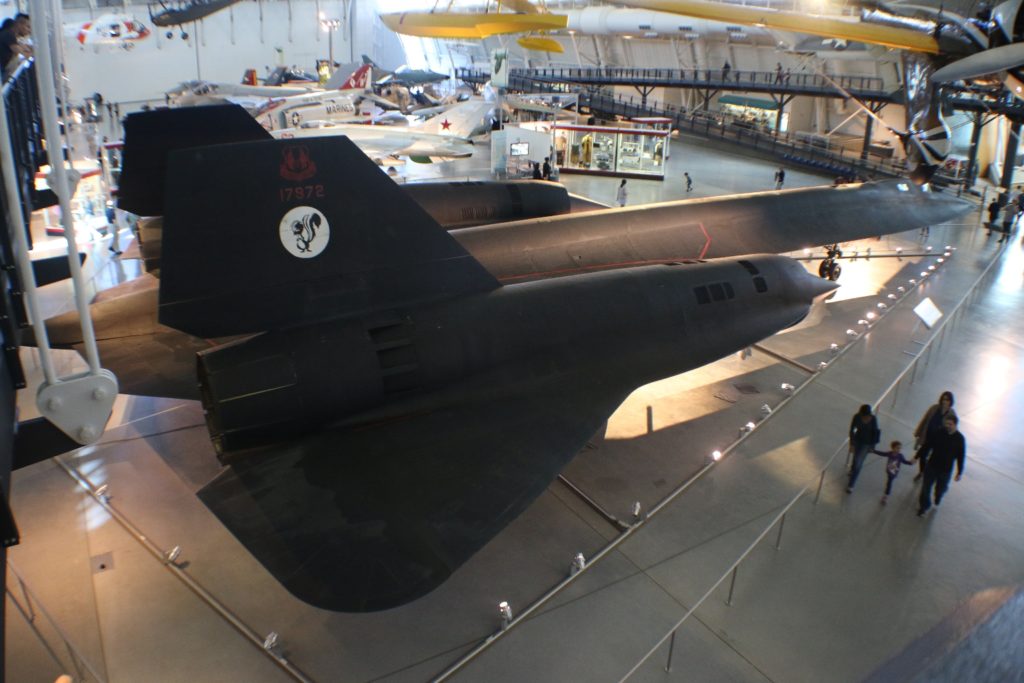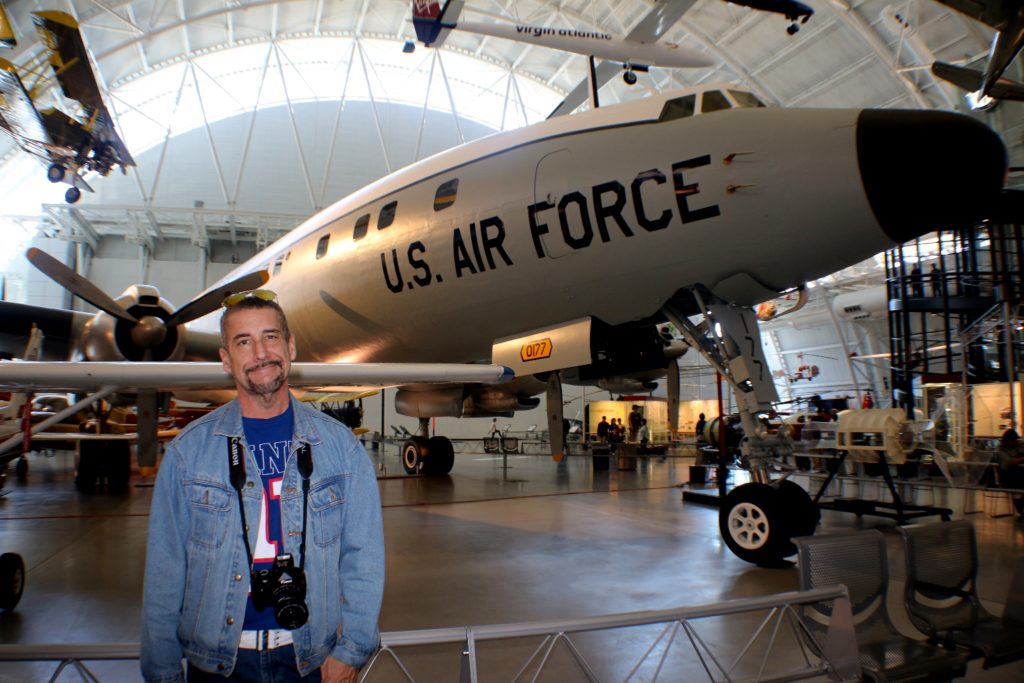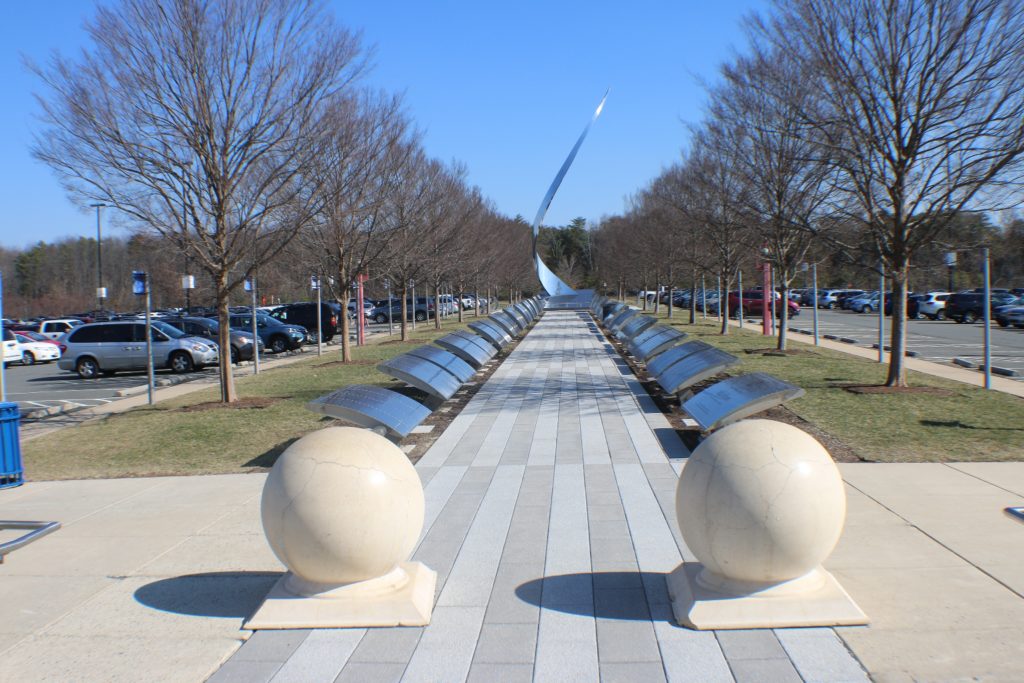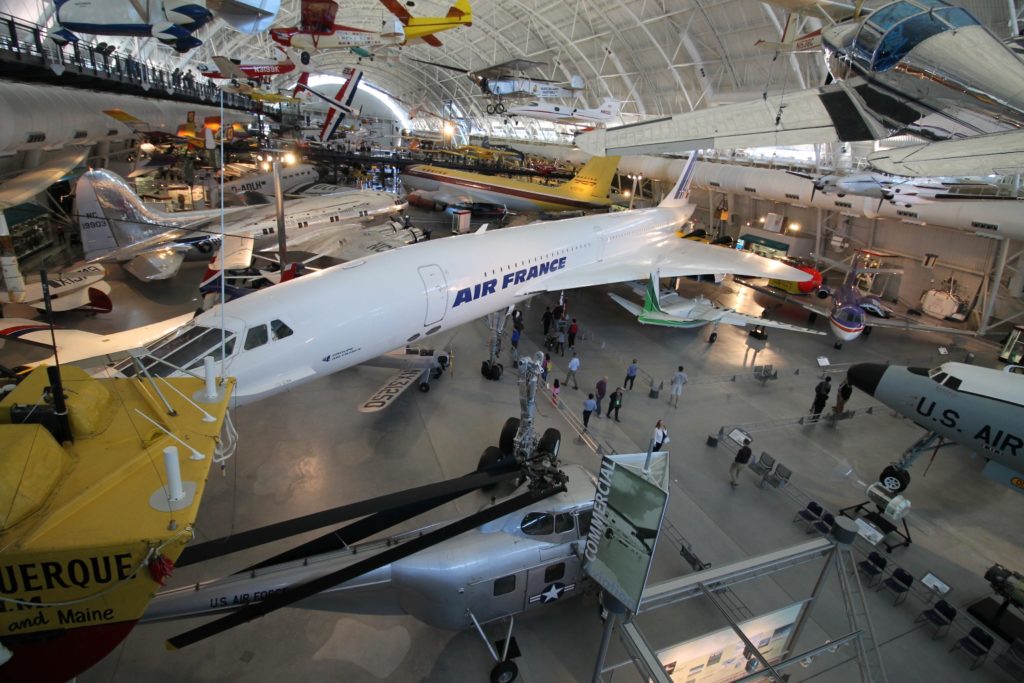
Dave and I finally made a trip to Chantilly to visit the National Air and Space Museum’s Steven F. Udvar-Hazy Center near Dulles International Airport. The center is an extension of the original National Air and Space Museum on the National Mall, which we really need to re-visit. Together, the two sites showcase the world’s largest collection of aviation and space artifacts.
The design showcases the museum’s artifacts. It is configured like an airport terminal housing: the main hangar, the space hangar, the restoration hangar and artifact storage. The exhibition space is 10 stories high and is as long as three football fields. An active runway allows planes to fly in and taxi directly to the museum.
Here is a view of the Museum building from the parking lot with the observation tower upfront.
We rushed to the observation tower first to beat the crowd. From the North side of the tower we could see Dulles airport and the planes going for landing.
Then an elevator down took us to the “air traffic control” room, with the workstation and monitor for Dulles Airport. We could hear the voice form the airport command center.
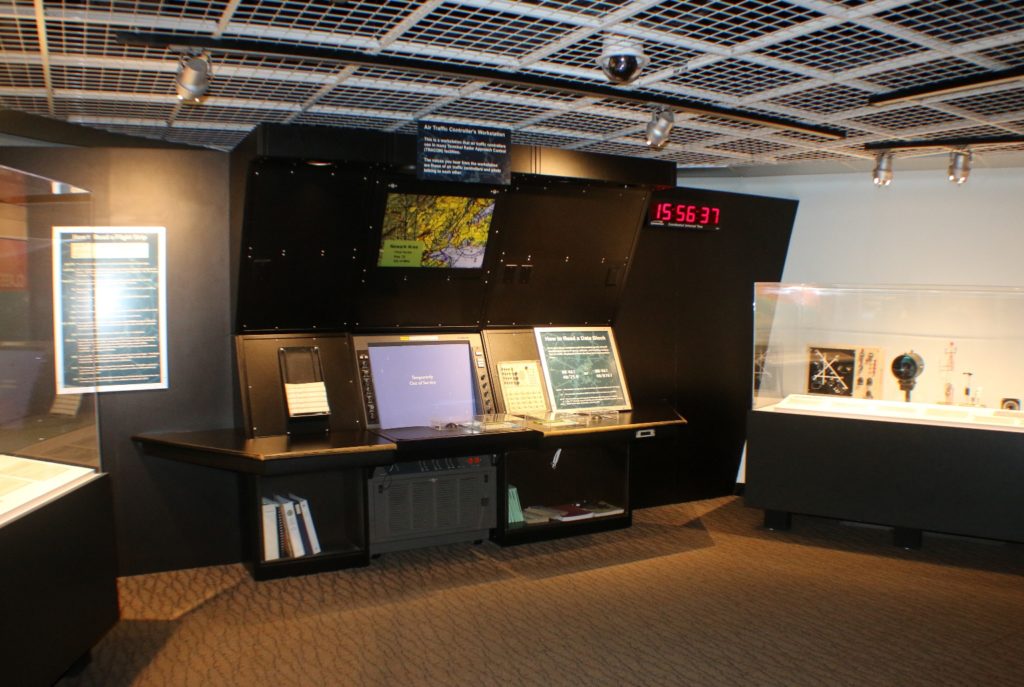
Next was a visit to the IMAX theater. We saw Journey to Space in 3D. The movie was interesting and informative.
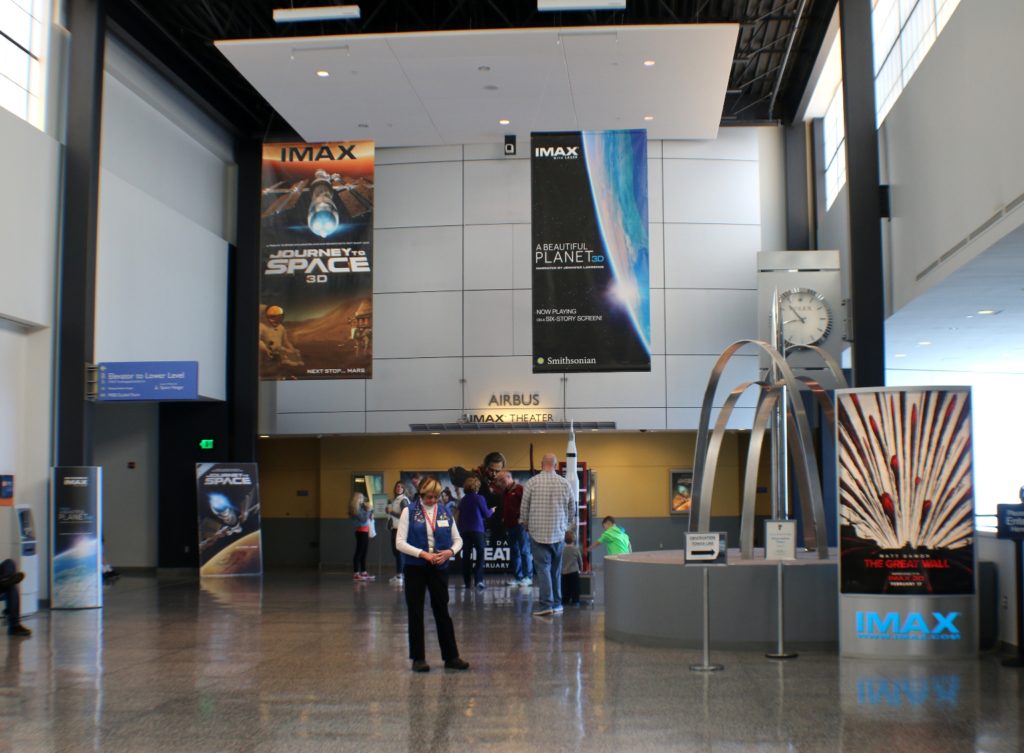
The museum displays hundreds of famous spacecraft, rockets, satellites and space-related small artifacts. There are just a very few of them.
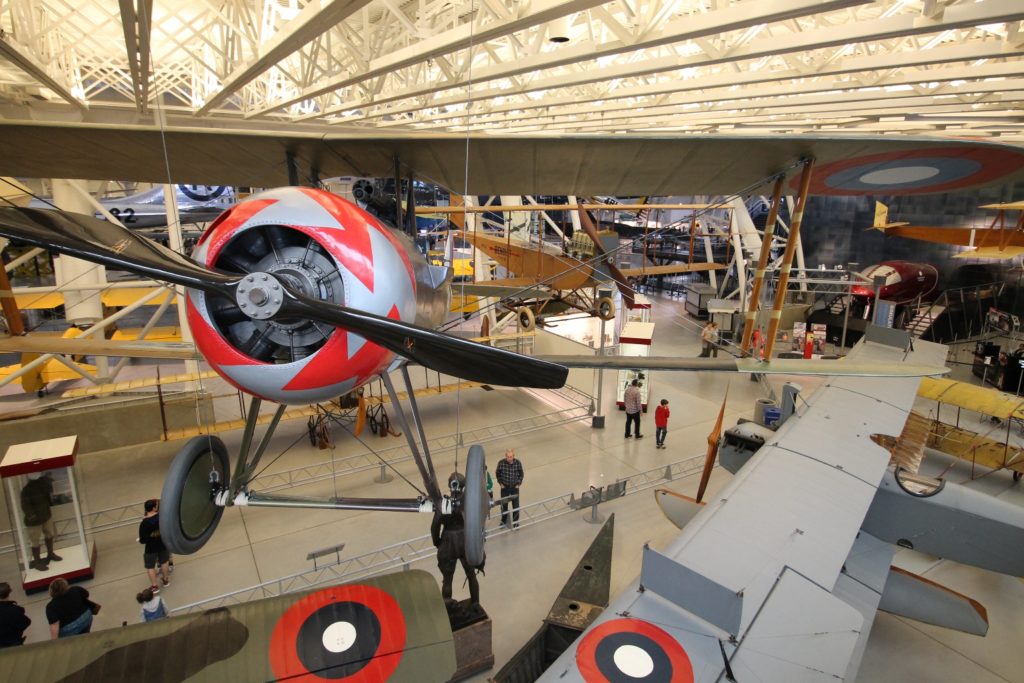
Visitors can walk among aircraft and small artifacts in display cases located on the floor, and view aircraft hanging from the arched ceiling on elevated walkways. Grumman G-22 Gulfhawk II on display in the Boeing Aviation Hangar on the left. The Bucker Bu-133C Jungmeister is on the right. The Concorde is in the background.
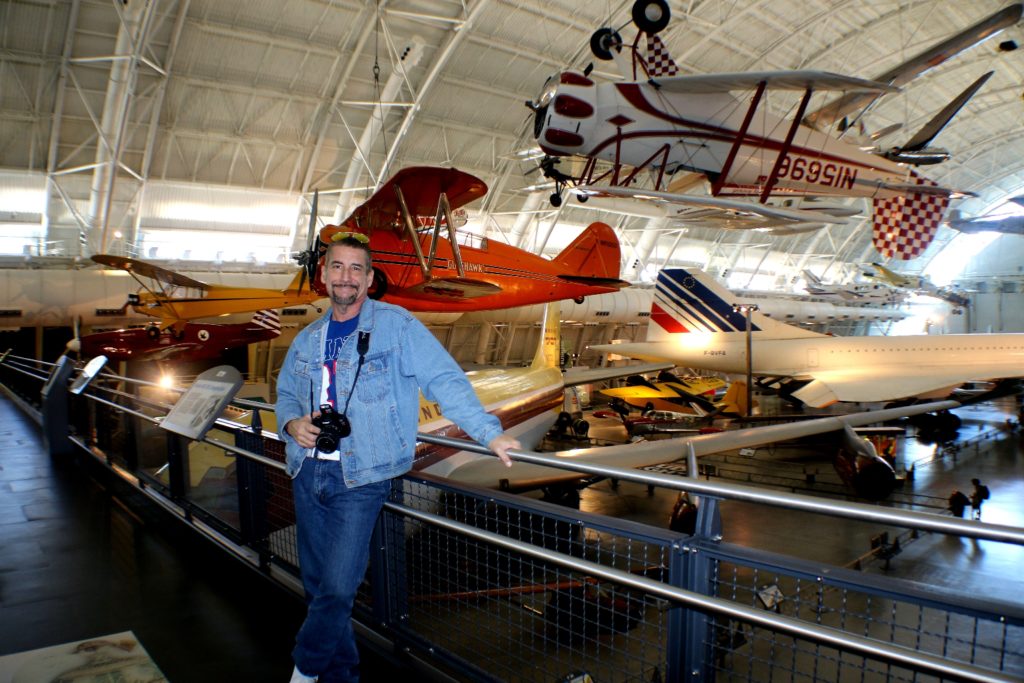
Vought-Sikorsky Kingfisher is on display in the Boeing Aviation Hangar. The Kingfisher was the U.S. Navy’s primary ship-based, scout and observation aircraft during World War II.
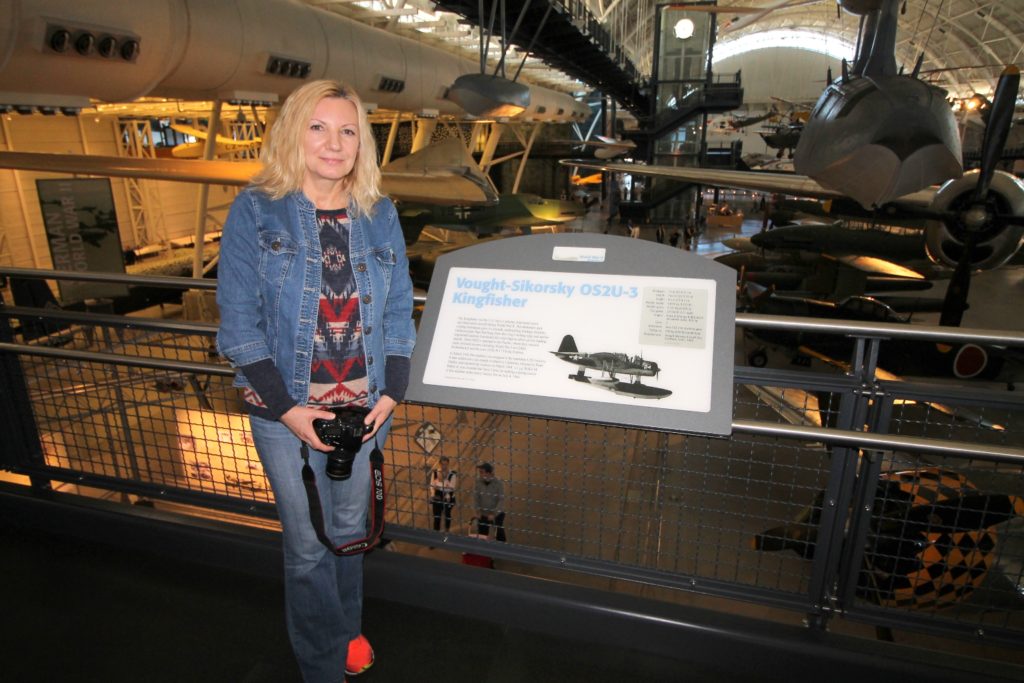
Enola Gay was the first aircraft to drop an atomic bomb in combat. It is the Boeing B-29 Superfortress which dropped the first atomic bomb on Hiroshima, Japan.
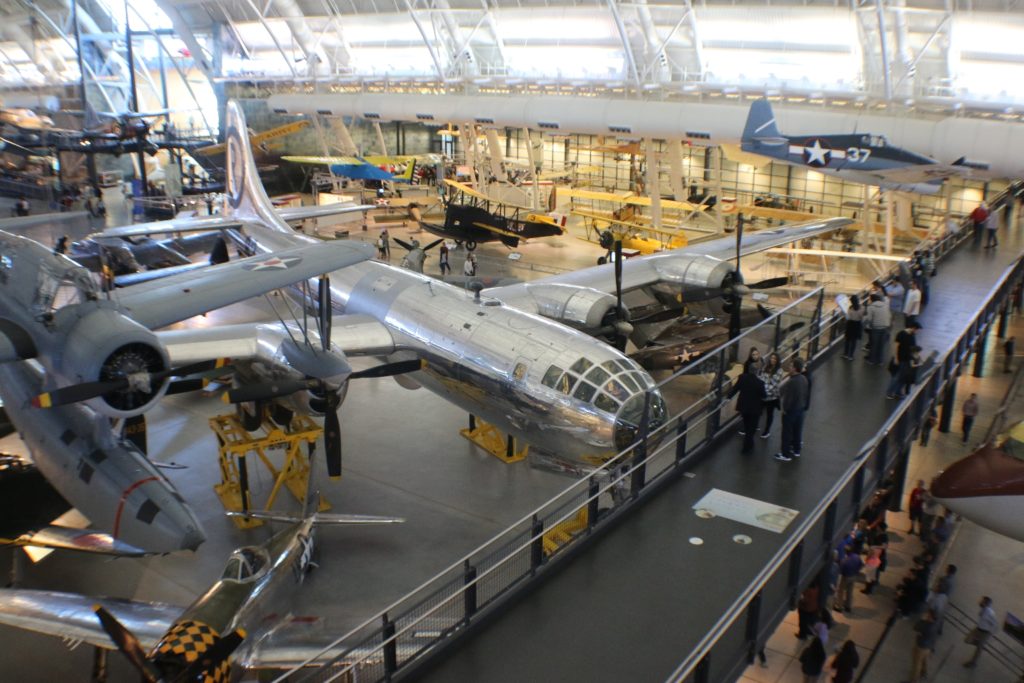
A closer view of the Enola Gay.
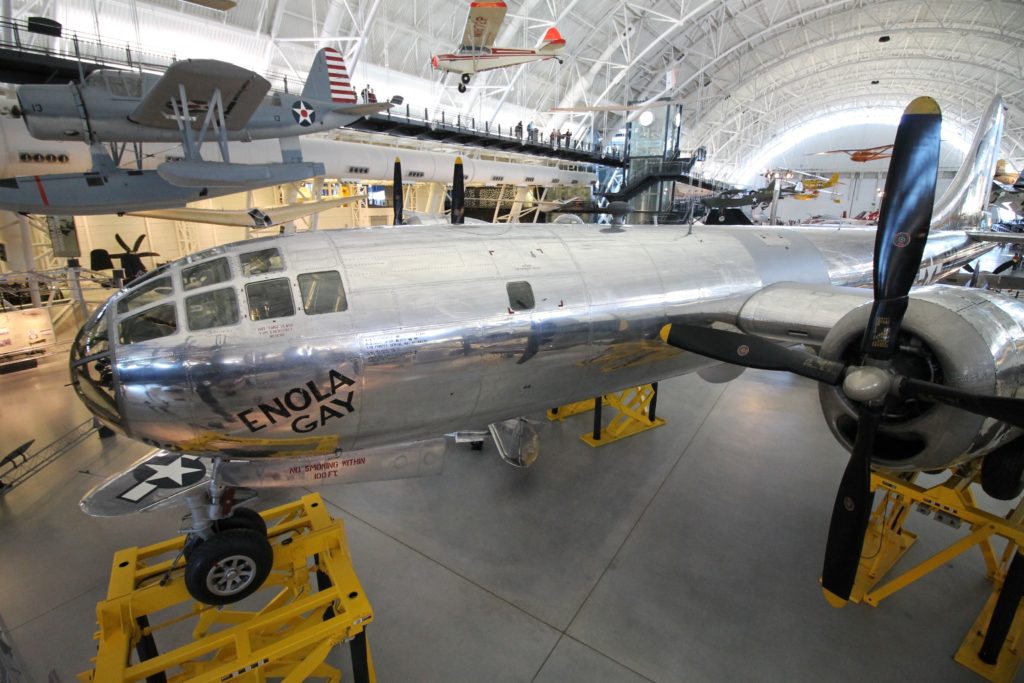
A view from the hangar upper level.
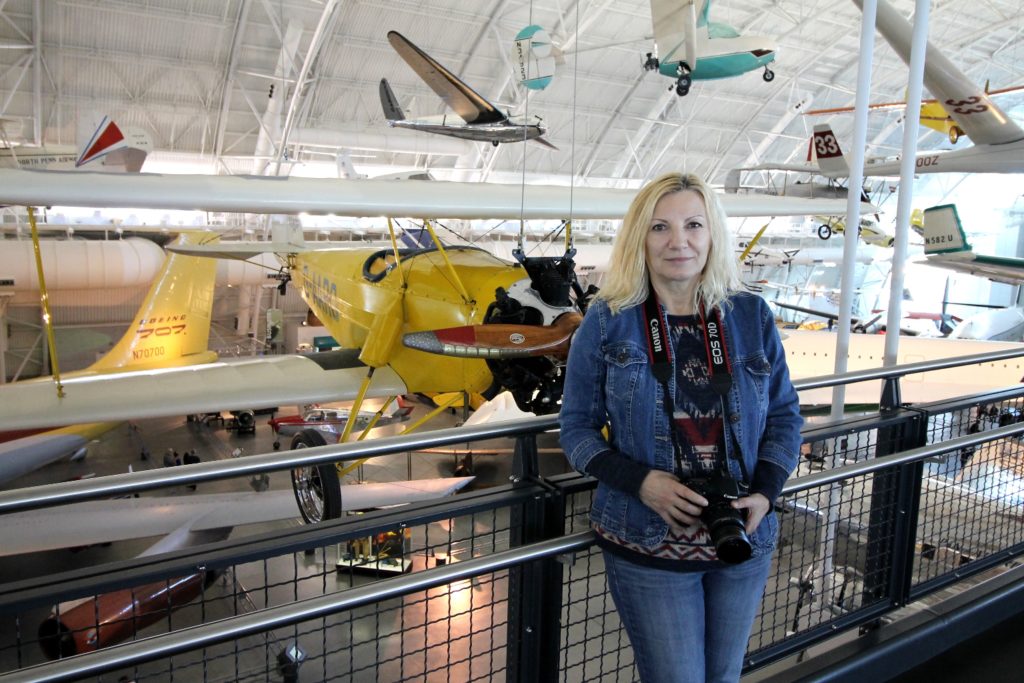
Air France Concorde, the first supersonic airliner. Not in use anylonger. It is in the main image as well.
From right to left: Robinson R44 Astro G-MURY (red; flown around the world twice), Bell H-13J (blue and white; first flight of a U.S. president), Bell Model 47B (white top; flew for 57 years making it the longest flying helicopter in history, set world hovering record).
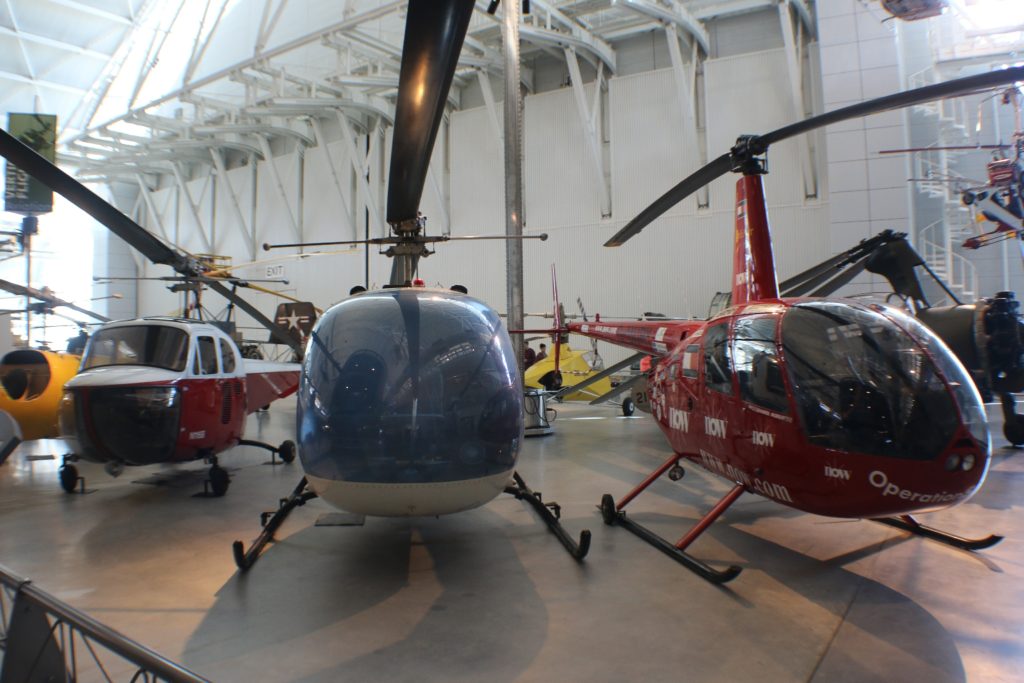
With the Laser 200, Leo Loudenslager won an unprecedented seven U.S. National Aerobatic Championship titles between 1975 and ’82, as well as the 1980 World Champion title. The Laser 200 emerged as a lighter, stronger, and more powerful aircraft, enabling Loudenslager to perform sharper and more difficult maneuvers.
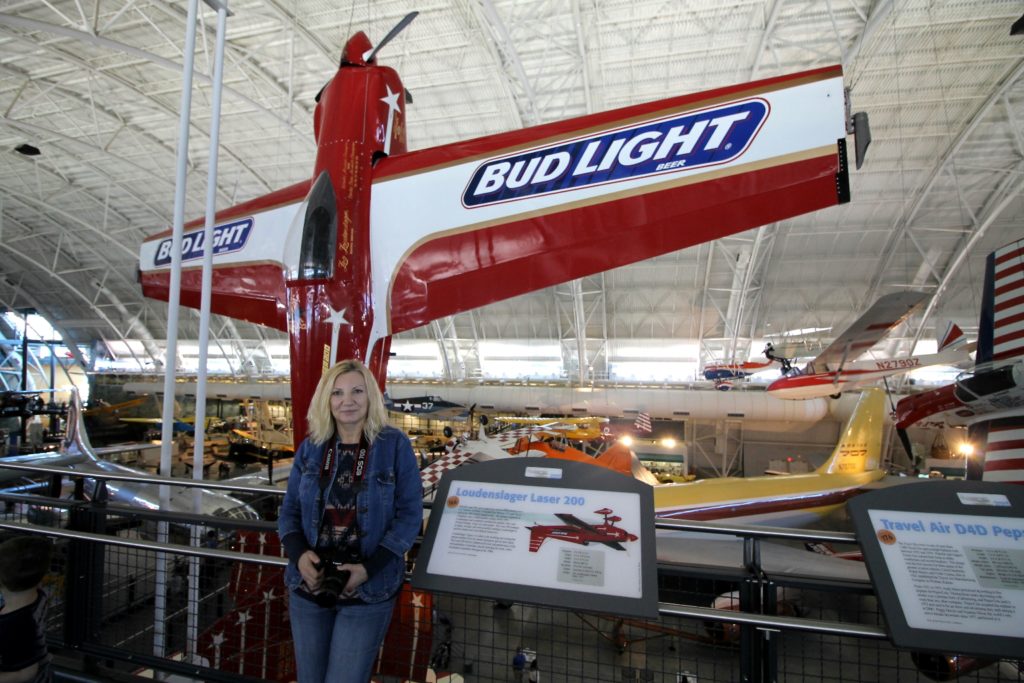
A view of the Discovery shuttle from the upper level.
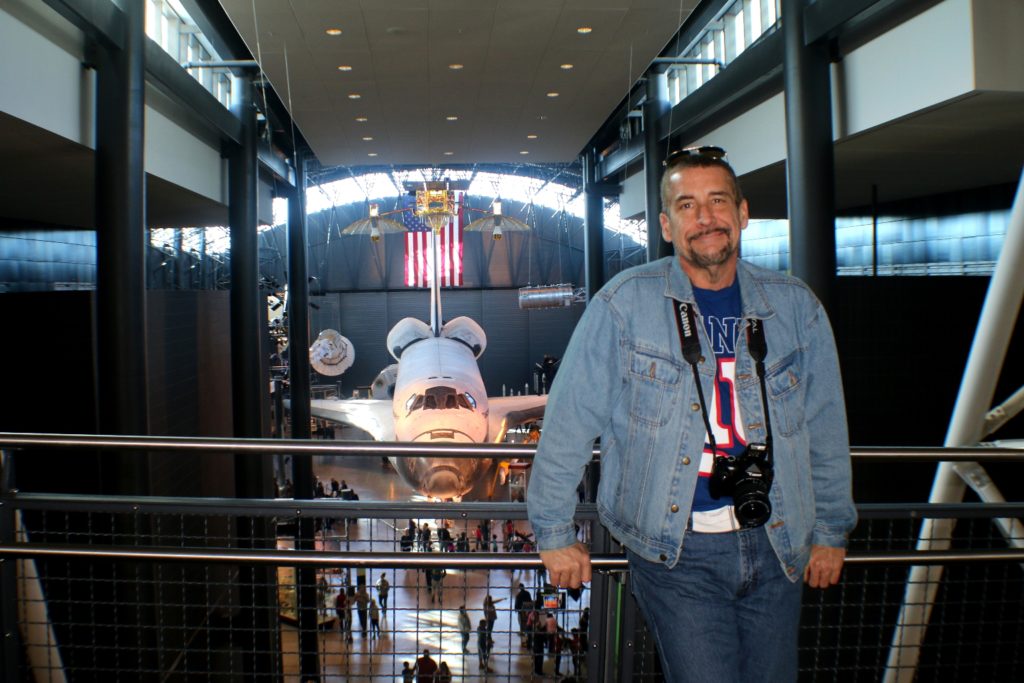
The orbital spacecraft Space Shuttle Discovery was put on public display in the James S. McDonnell Space Hangar on April 19, 2012, replacing the atmospheric test vehicle, Enterprise.
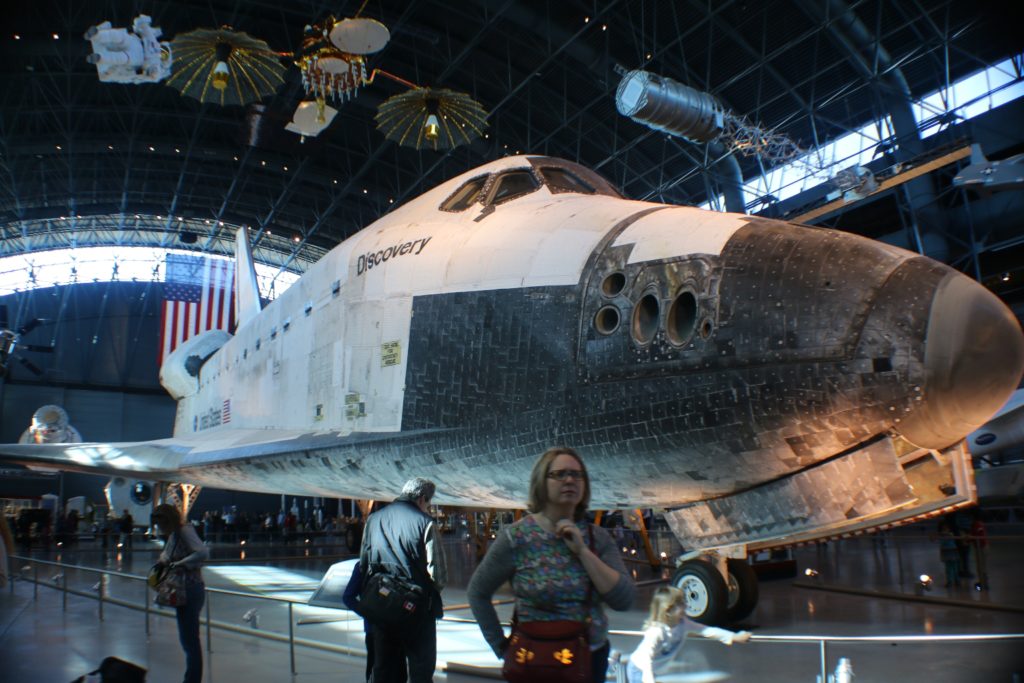
Had to have a picture next to the shuttle. 🙂
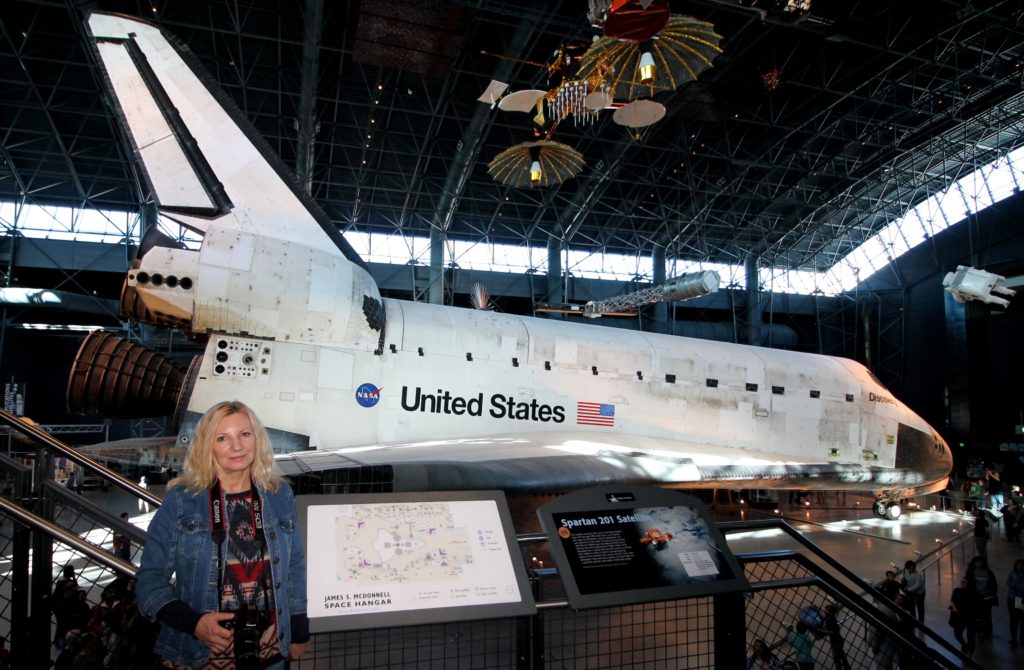
Spacelab, a laboratory module flown in the payload bay of the Space Shuttle, is in the Space Hangar.
NASA built several “boilerplate” Apollo command modules for testing and to train astronauts and other mission crew members. Apollo 11 Water Recovery Display includes an Apollo Boilerplate Command Module fitted with the original flotation collar and flotation bags used during the recovery of the Apollo 11 Command Module. The Apollo 11 Command Module is on display at the National Mall Building in Washington, DC.
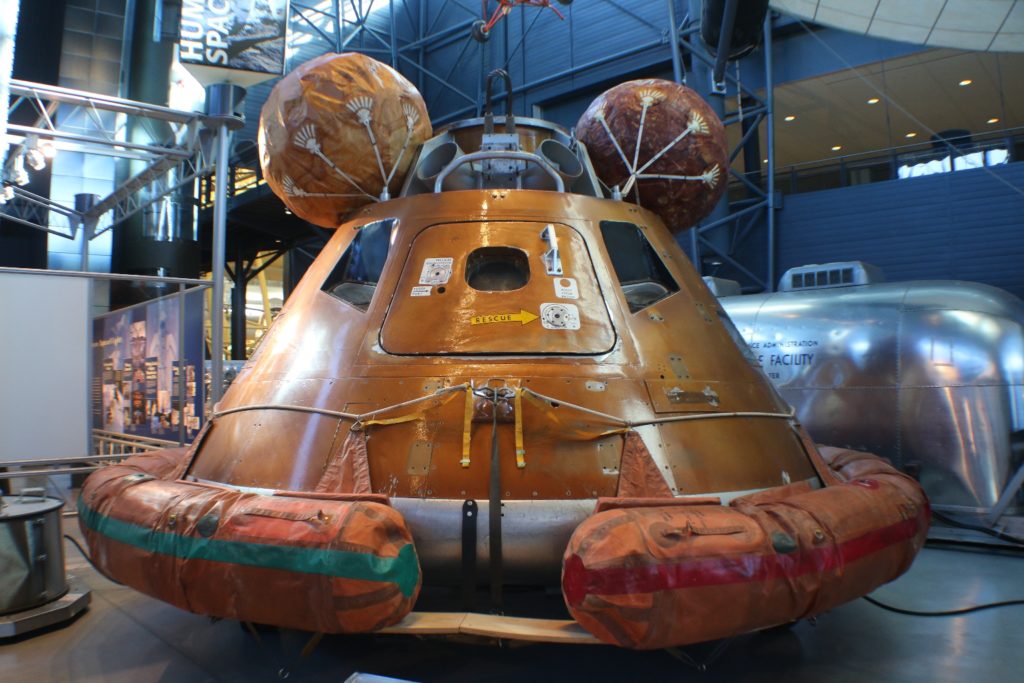
During its operational history, the Blackbird achieved the world record for sustained flight at the highest altitude. It also set records for speed, traveling from LA to DC in under 70 minutes. Even if ground-based missiles were launched at the Blackbird, the plane traveled so fast and so high that they simply couldn’t catch up, and would have missed the aircraft by several miles.
One of the U.S. Air Force aircrafts.
The National Air and Space Museum’s Wall of Honor is a permanent memorial at the Steven F. Udvar-Hazy Center in Chantilly, VA recognizing those with a passion for flight. Among the names on the Wall of Honor are names of icons of flight such as the Wright brothers, Amelia Earhart, Neil Armstrong, John Glenn, and Jim Lovell.
We spent almost all day at the museum. We went through most of the exhibits, but there wasn’t enough time to go through all of them. It was an interesting experience. The museum is beautiful and very well organized. There is a McDonalds restaurant on site, which is convenient.
